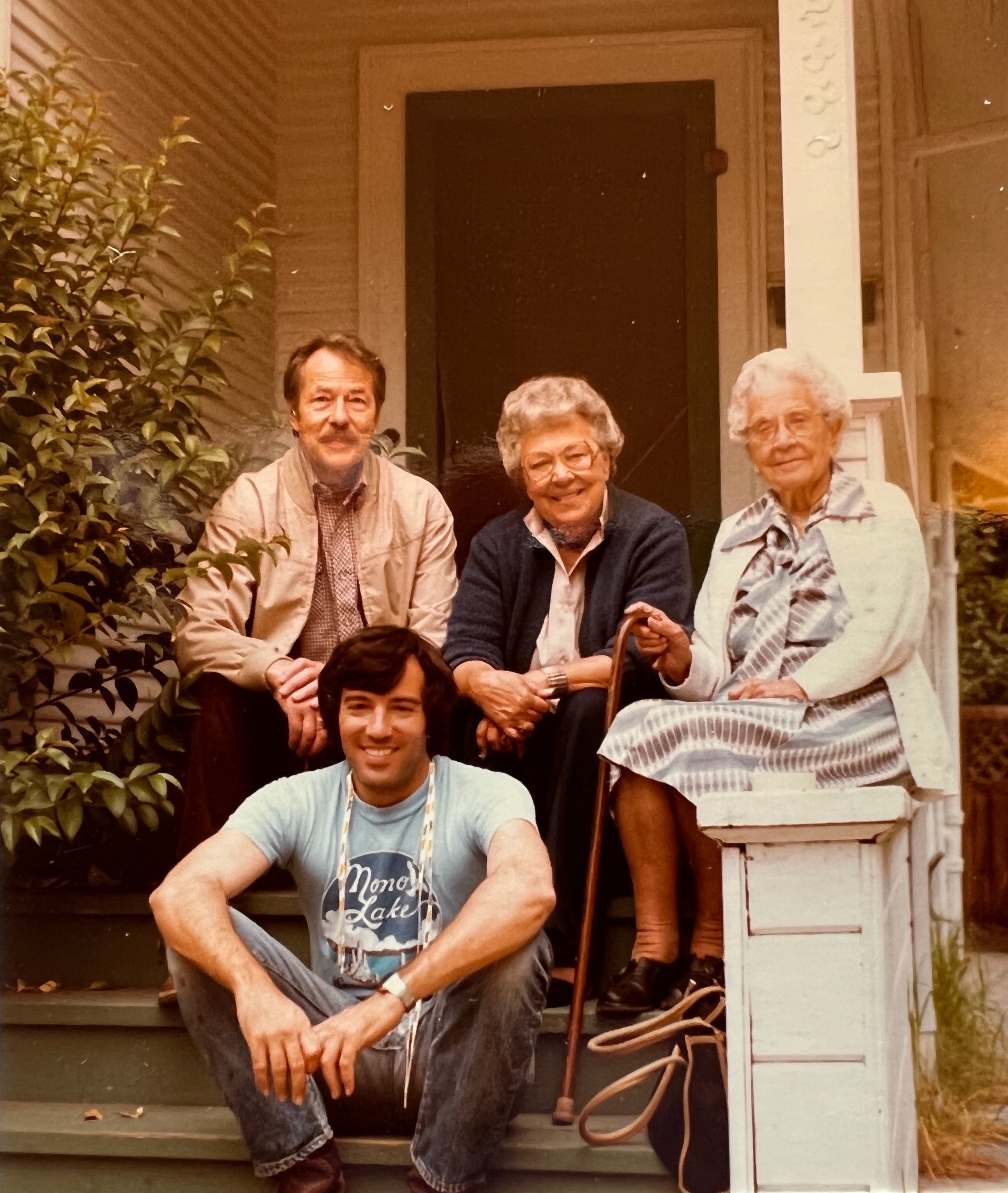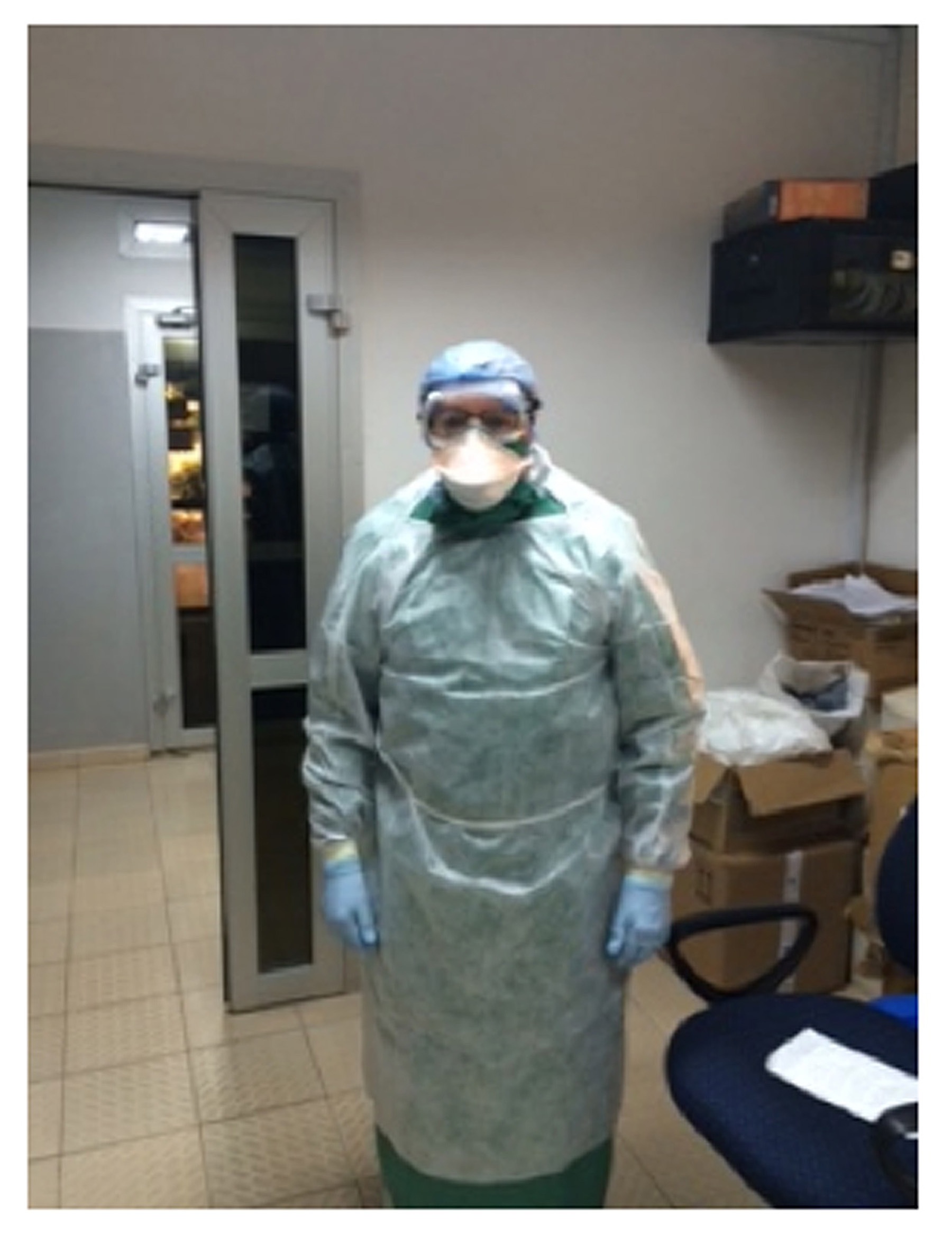...
When I graduated in '69, and was working on that project, Dr. Cogswell got a call from Dr. Frank Pitelka [Dr. Frank A. Pitelka] at Berkeley, who said, "We suddenly have money for a research assistant to help us up in Alaska, Northern Alaska near Point Barrow. Do you have anybody that we can hire?" Dr. Cogswell came to me and said, "Are you interested in going to Alaska? You have to leave in about five days." I said, "Well, let me talk to my wife about this." We discussed it, and both of us were fine with it. I viewed it as a great opportunity to go to the Arctic and work on the north slope and learn what it was like to work with a group of ecologists from Berkeley. So I did that, and it was a wonderful experience. It was tough work. The sun never set the whole time I was up there, as we were well above the Arctic Circle. That took a bit of adjustment. It is a fond memory; it was a great experience.
| Span | ||
|---|---|---|
| ||
Tom Schwan, on the shore of Arctic Ocean, near Barrow (now Utqiagvik), Alaska, while working as field assistant on bird project; July 1969. |
...
Schwan: My thesis advisor, Dr. Dean Furman, worked on a large monograph on the ticks of California while I was his student. That was his last big project. He actually went to the Rocky Mountain Laboratory on sabbatical, spent nine months here in Hamilton. And this was before the collection of ticks was moved to Silver Spring, Maryland. Because of this, I was well aware of the tick collection here at RML. I was also following the CDC’s [Centers for Disease Control and Prevention] Morbidity and Mortality Weekly Reports [MMWR] on Lyme disease and what could or could not be causing it. I helped Dr. Furman, preparing maps for his monograph on the ticks. We were very well aware of what was happening in Montana and concerned for sure.
| Span | ||
|---|---|---|
| ||
Berkeley, California, ready to drive to New Haven, Connecticut to begin postdoctoral fellowship at Yale University. Behind me (left to right) are my father, Creighton, mother Beverly, and grandmother Freda; August 1983. |
...
I arrived at Yale just before the cause of AIDS [acquired immune deficiency syndrome] had been discovered. Dr. Shope had me testing serum samples from a large population of gay men in Florida, to see if they had antibodies to certain mosquito-borne viruses that might link these mosquito-borne viruses to AIDS.
| Span | ||
|---|---|---|
| ||
Mono Lake, California; ready to raft to an island to collect ticks for virus isolation at Yale University; January 1984. |
...
At Yale, as I said, I learned a lot of techniques and laboratory skills, and it was exciting to be there. I enjoyed living in New Haven for three years, and all of the faculty were tremendous and so willing to help me. I was supported by an NIH Training Grant awarded to Dr. Francis Black [Dr. Francis L. Black], an international measles expert. He would funnel out training grants to different units, and I was able to be hired for the first two years on his NIH Training Grant given to the Yale Arbovirus Research Unit. Again, I worked primarily on tick-borne viruses from California. We also did field work in Newfoundland and isolated viruses from ticks we collected from seabird colonies there.
| Span | ||
|---|---|---|
| ||
Holding an Atlantic Puffin, Great Island, Newfoundland, while collecting ticks from burrows for virus isolation at Yale University; July 1985. |
...
Harden: In July 1994, you married Carol Schwan [Carol Lynn Schwan] and adopted her younger son, Shawn [Shawn Fagan Schwan]. In your work life, you moved in late 1994 or early 1995 to the Laboratory of Microbial Structure and Function. Tell me about why you moved from the Vectors and Pathogens lab to the Microbial Structure and Function lab.
| Span | ||
|---|---|---|
| ||
Laboratory of Vectors and Pathogens, RML. Tom (standing, fifth from left) between Dr. Willy Burgdorfer and Dr. Claude Garon (Laboratory Chief), fourth and sixth from left, respectively; October 1991. |
...
Schwan: That happened when Dr. Gallin reorganized the laboratories. What had been the Laboratory of Vectors and Pathogens, with Claude Garon as Chief and in which I was a Senior Staff Fellow, was disbanded. Claude became Chief of the Microscopy Branch, which was separate from the other laboratories. My group was reassigned to the Laboratory of Microbial Structure and Function, where John Swanson was Laboratory Chief.
| Span | ||
|---|---|---|
| ||
After reassignment to the Laboratory of Microbial Structure and Function. Left to right, Dr. John Swanson (Laboratory Chief), Dr. Seth Pincus, Dr. Patricia Rosa, and Tom; 1994. |
...
In 1999, Dr. Musser came onboard as Chief of the newly created Laboratory of Human Bacterial Pathogenesis, which replaced the Laboratory of Microbial Structure and Function. I became a PI in that new lab. So, at this point, I had had Claude, then John, and now Jim as my lab chief. Jim came on board, was strongly supported, and built a big program. He and his large group were very productive in the number of publications. Then one day in 2003, he came to my office and told me that he was leaving RML to return to Houston.
Harden: Whoa.
| Span | ||
|---|---|---|
| ||
After reorganization and reassignment to the Laboratory of Human Bacterial Pathogenesis, RML. Left to right, Dr. Joe Hinnebusch, Dr. Frank DeLeo, Dr. Michael Otto, Dr. James Musser (Laboratory Chief), Dr. Patricia Rosa, Dr. Robert Belland, and Tom; 2000. |
...
Until I retired, I worked primarily on tick-borne relapsing fever. That became my passion and my focus. And it was during this time that Dr. Zoon and Dr. Barron [Dr. Karyl Barron], Deputy Director of NIAID, supported me in developing a relapsing fever project in Mali, in West Africa, at the research and training center outside Bamako. Dr. Zoon also was very supportive of my having a field project on relapsing fever in Montana. I really appreciated her support enabling my group and me to do some field work. It really saved me in a sense because I finally felt I was doing what I was hired to do back in the 1980s. I was finally able to bring together my interests and skills both in the field and what I had learned in the laboratory. And we accomplished some work I am very proud of.
| Span | ||
|---|---|---|
| ||
Coming out of the attic to collect ticks in a cabin associated with an outbreak of tick-borne relapsing fever, Wild Horse Island, Flathead Lake, Montana; August 2002. |
...
Schwan: Yes, I did go to Japan but basically there isn't much more to tell than that. I went over for a week and visited several laboratories. I gave seminars in Fukuyama and Sapporo. The fellowship was funded by the Japan Health Sciences Foundation, but I didn't live in Japan for any period or collaborate in a serious way. I had helped the fellow who put me up for the fellowship and hosted me. His name is Masahito Fukunaga [Dr. Masahito Fukunaga], and he's a wonderful fellow and now retired. He's the person who described Borrelia miyamotoi, which is the relapsing fever spirochete associated with hard ticks. And when he put his paper together in ‘94, he asked me if I would work on the paper and improve the English. I said, “Yes,” not knowing what I was getting myself in for. He sent me a draft that needed a lot of work. I basically rewrote the whole thing--well, it felt that way--and he acknowledged me for that at the end of the manuscript. I'm not a co-author and did nothing to warrant co-authorship. But the effort took me a couple months with everything else I was doing. It's a landmark paper now, given that Borrelia miyamotoi is known to be a human pathogen in Europe, Asia, and North America. There's a lot of interest in that disease and the ticks that transmit the spirochete.
| Span | ||
|---|---|---|
| ||
Dr. Ben Mans (left) and Tom identifying ticks at Malaria Research and Training Center, Bamako, Mali; December 2007. |
...
The night we left—all the flights that one takes when one leaves Mali are late in the evening—we were at the airport in Bamako waiting to depart, and Dave got a text that said, “Another sample's coming in. We're going to test it here in the Bamako lab tomorrow." We got on the plane and left. When we got back to the States, we found out that the second sample was positive, and it turned out that there was another case, but Ebola never erupted in Mali like it did in other places. So, I didn't do much at all. I was over there on one trip to help if needed and I got an award. As I told several people, “I don't deserve this.” But there it is; I was on the list of awardees.
| Span | ||
|---|---|---|
| ||
Donned with personal protective equipment (PPE) for handling human blood sample infected with Ebola virus, Bamako, Mali; November 2014. |
...
The year before I “semi-retired,” I had been asked by a fellow at the University of Montana in Missoula if I might help develop a course with the parasitologist Bill Granath [Dr. Willard Granath, Jr.]. I asked Dr. Zoon about this and she was very supportive. It basically meant driving to Missoula twice a week and giving a 90-minute lecture for half a term. The classes I taught dealt with the epidemiology of vector-borne zoonotic diseases. I did that for five years. My last class was in the spring 2017.
| Span | ||
|---|---|---|
| ||
Photograph replicating an historical picture of Dr. Willy Burgdorfer (insert lower right) working with ticks; January 2018. |
...
At home, I'm set up and working on a big project on tick salivary glands. I've got a microscope two feet away from me right now as we speak that actually belonged to the late Bill Hadlow [Dr. William Hadlow]. It was his personal microscope at home, and after Bill passed away, his daughter sold it to me. So, I'm still working, plugging away, trying to finish a few things, and learning something new each day.
| Span | ||
|---|---|---|
| ||
With brother Mark (left) at the Minnesota River valley memorial honoring the Schwandt (later Schwan) family members killed on August 18, 1862, during the Sioux uprising. Tom’s great-grandfather, August Schwandt, was scalped and left for dead; only he and a sister survived. |
...











